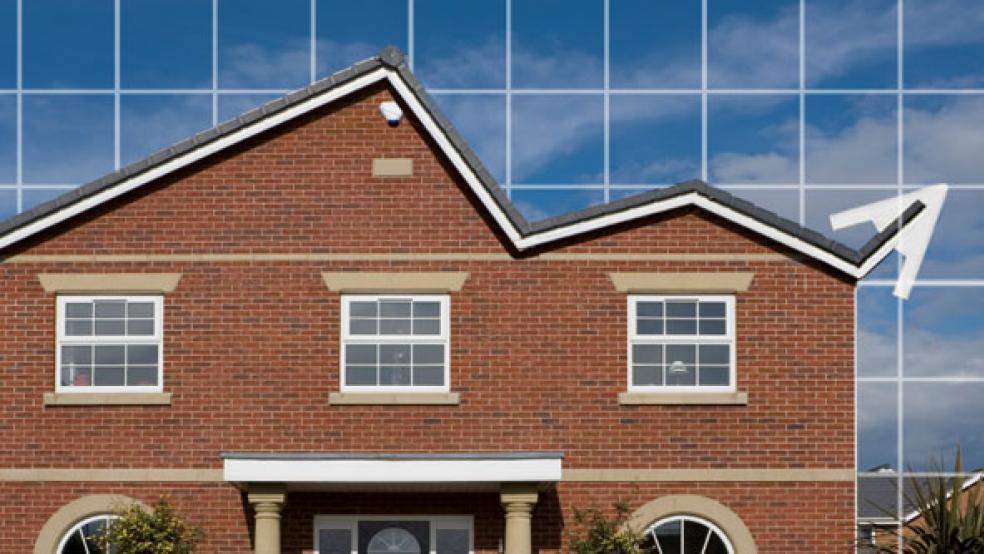U.S. housing market is like a case of good cop/bad cop.
The good cop softens you up with record-low mortgage rates and a huge supply of available houses. The bad cops -- risk-averse lenders -- have tightened their loans and require bigger down payments along with stellar credit.
This push-pull scenario is likely to continue in 2012, say U.S. housing experts. The National Association of Realtors forecasts a rise in home sales of 5 percent, to 4.5 million in 2012. “[Growth] is a slow, gradual process. It’s been frustrating,” says Walter Molony, National Association of Realtors spokesman. “It’s tough to get a mortgage. People have to pay attention to their credit scores.”
In December, the Wall Street Journal reported that a number of hedge funds, including Caxton Associates LP, SAC Capital Advisors LP and Blackstone Group LP, have been investing in the housing market. If you’re in the market for a house, why wouldn’t you want to buy one at a bargain price?
Housing markets good local economic conditions and good job creation are generally doing better. The 10 best performing states are North Dakota, Wyoming, Minnesota, Alaska, Nebraska, Utah, Virginia, Colorado, Kansas and New Hampshire, based on LendingTree’s State Recovery Index from December that looks at six elements influencing the housing market, such as unemployment and home/rental vacancies. For cities, a Clear Capital report released last week predicts the five best-performing metro areas will be Orlando and Miami in Florida; Bakersfield, Calif.; Washington, D.C.; and Phoenix, Ariz.
Below are some pros and cons of jumping into the market now:
Why You Should Buy
• Low mortgage rates. The new year is starting with record low rates. The average rate on a 30-year fixed mortgage to 3.88 percent this week, said Freddie Mac on Thursday, down from a record low of 3.89 percent last week and the lowest since 1950. Mortgage rates are not going to be an impediment to well-qualified borrowers anytime in 2012.
• Pent-up demand to buy houses. For the past several years, household formation has slowed, Molony points out. Young people have moved home with their parents or shared a place with friends instead of buying their own houses. With low mortgage rates and time to save for down payments, prospective buyers who have been on the sidelines may finally take the plunge into homeownership. Once they do, prices will start to climb again.
• Rising rents. With declining vacancies in rentals, prospective buyers may be more motivated to purchase a house instead of paying high rent. Rents in San Francisco, for example, increased 25 percent in the last 18 months, says Adrian Nazari, chief executive officer of Credit Sesame.
• Turn-key rental properties. With rental rates soaring, more investors will be buying homes in order to rent them out. "We predict single-family rental homes as a particularly bright spot, driven by the millions of families who either lost their home to foreclosure or simply can’t secure a mortgage,” says Jim McClelland, CEO and president of MACK Companies. “We’ll see more investment in distressed single-family homes to rehab them as rentals, both from individuals and REITs.”
• More refinancing opportunities for struggling homeowners. Recent enhancements to the Home Affordable Refinance Program (HARP) will help upside-down homeowners refinance, which could be a stabilizing factor for 2012, McBride says.
• U.S. real estate market is undervalued. Real estate prices are lower in general than the rest of the world, Nazari says. The average price per square foot in San Francisco is $520; in Paris, it’s $3,287. Foreigners are buying real estate in California and Florida more than any other area. “No societal group values homeownership more than foreign-born U.S. residents – those who have come to the country seek a better life, an American dream of their own,” Nazari says.
Why You Should Wait
• Mortgage rates could drop even lower. “We could see a notable drop if European debt crisis hits a crescendo,” says Greg McBride, senior financial analyst at Bankrate.com. “That’s going to spell the low point in Treasury yields and mortgage rates. We could see 30-year fixed mortgage rates moving down into the 3.5 percent neighborhood on average. It would be a brief opportunity. But if you miss the low point, it’s not the end of the world.”
• Backlog of foreclosed properties could saturate market. There are currently between 4.5 and 6 million homes that are either in foreclosure or 90 days past due on paying their mortgage, according to Mark Dotzour, chief economist and director of research at Texas A&M University’s Real Estate Center. As this supply comes onto the market, prices in oversaturated areas could fall further.
• Fewer new homeowners looking to buy. Though new housing demand could come from young Americans entering the market, it may take significant time for that to happen. From 2000 to 2005, about 1.3 million new households formed each year, but that’s now dropped to less than 1 million. Some argue that new homeowners who can afford to buy have already done so. Unemployment for those aged 25-34 is still at 9.4 percent and 14.4 percent for 20-24-year-olds. As Americans in their 20s and 30s continue to struggle, their entrance to the housing market could be delayed.
• Many markets are still hurting. As always in real estate, location matters most. Prices are still projected to fall in Atlanta, Ga.; Los Angeles, Calif.; Seattle, Wash.; Las Vegas, Nev.; Detroit, Mich.; and 20 other cities, according to Clear Capital.



